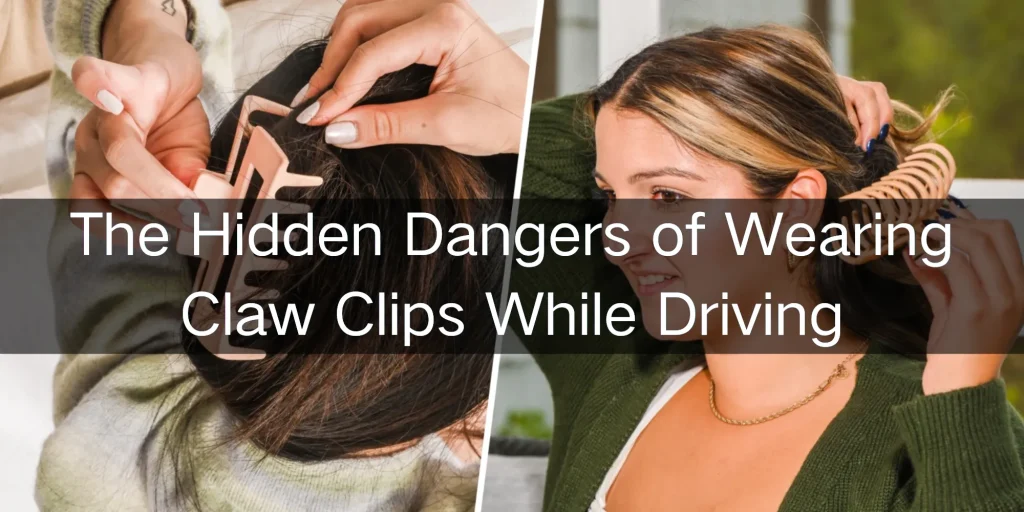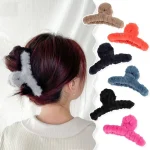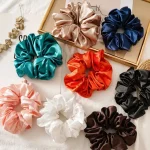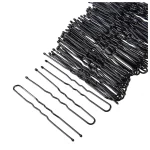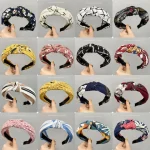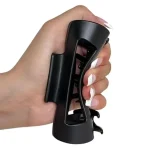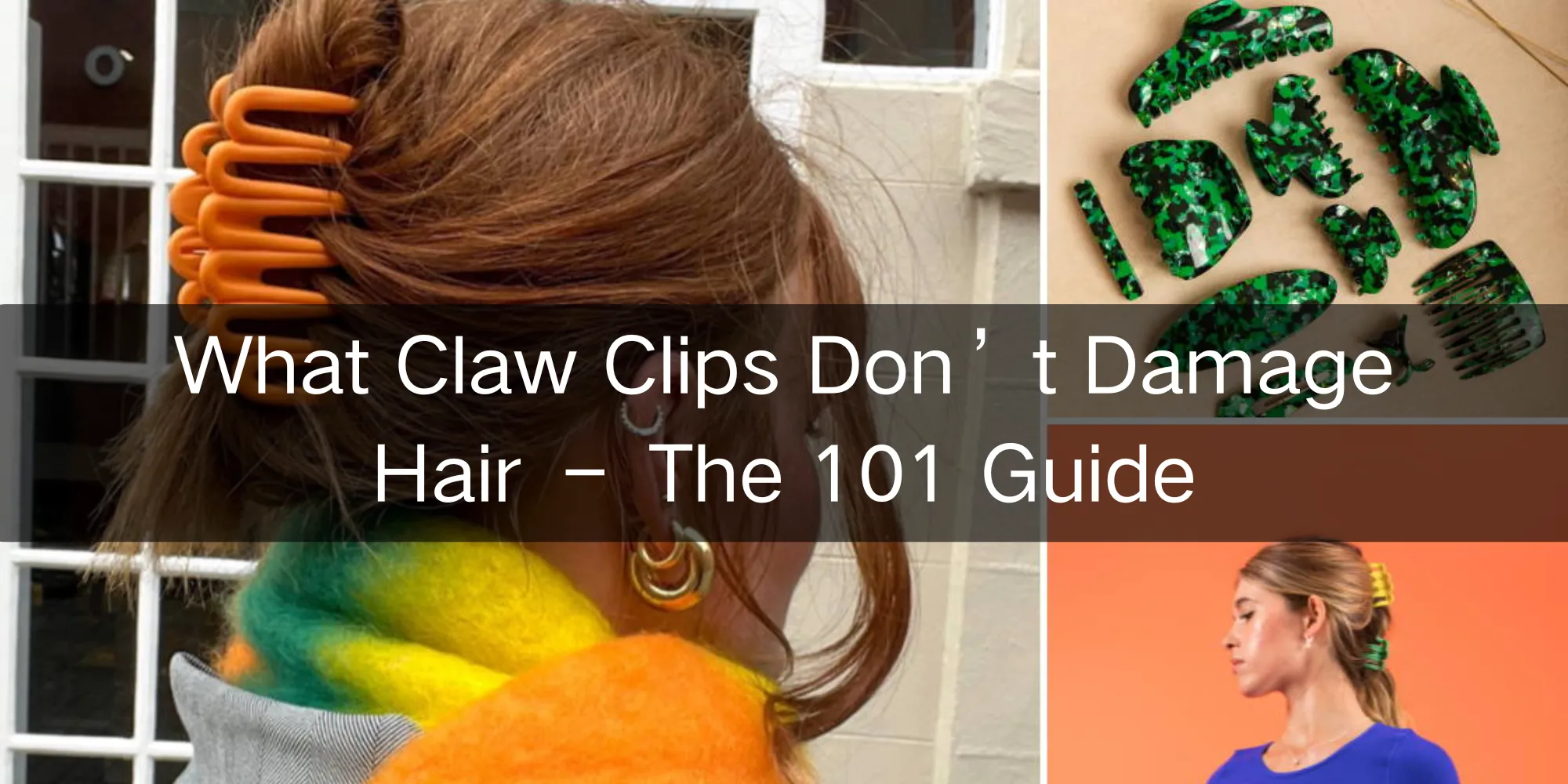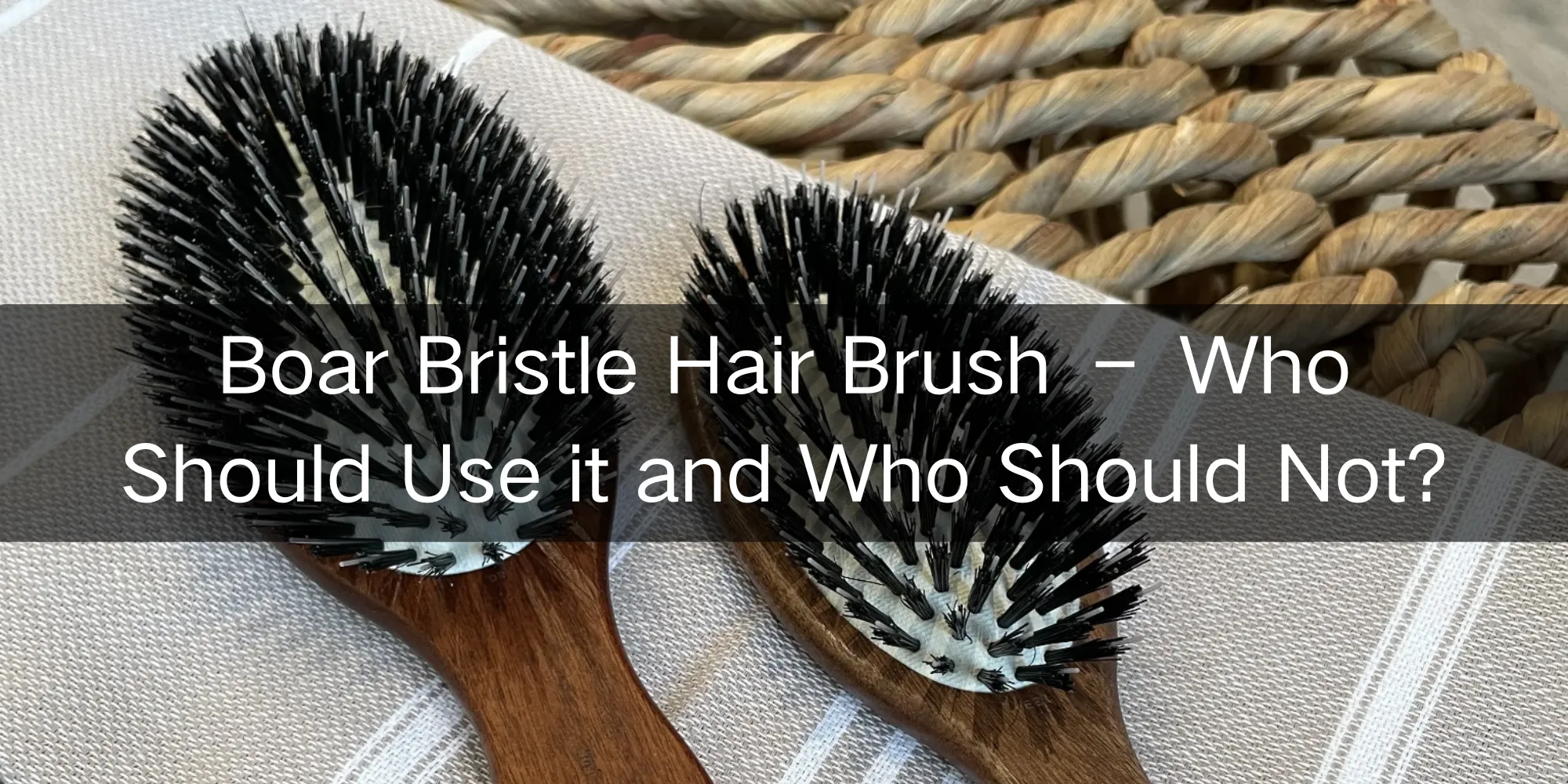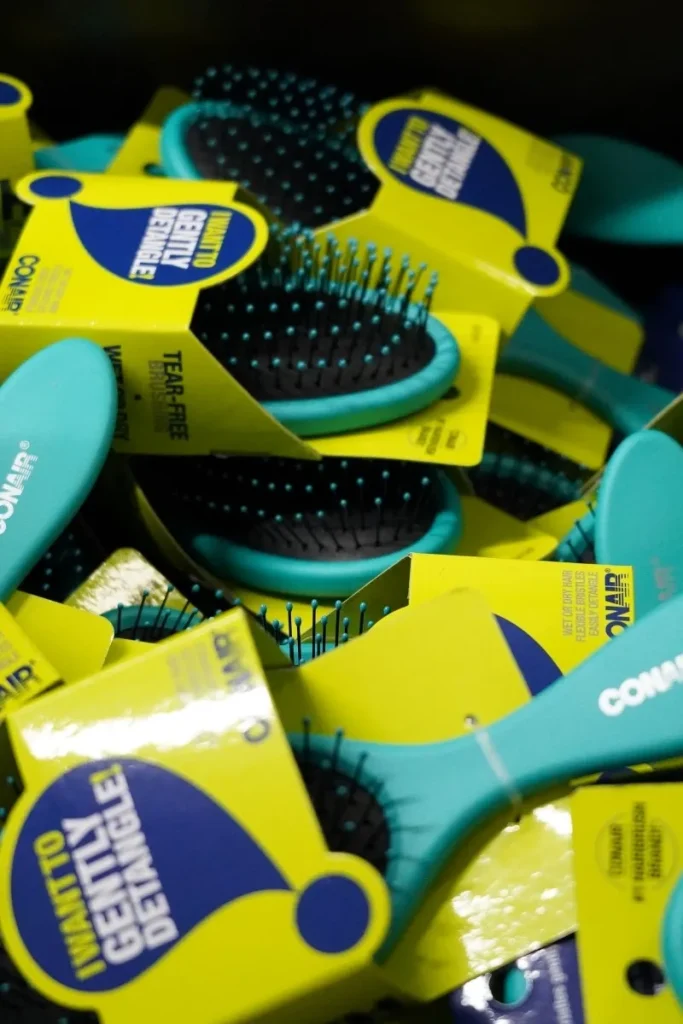People tend to underestimate the unnoticed hazards of wearing claw clips while driving. You may believe that it is no harm to wear a claw clip when driving, yet any accidents, even the minor ones, can make it a dangerous tool. The dangers are not imaginary, ranging between sharp pieces of low-grade clips to blunt injuries due to rigid pieces. So, is it safe to wear a claw clip while driving? Not quite. Knowing why you should not wear a claw clip when driving will save you the painful, unnecessary injuries. This paper will discuss the concept, significance, and dangers of wearing claw clips when on the road, the quality of the clip and the severity of injury, and the safer substitutes available instead. Keep reading!
What Are Claw Clips?
Claw clips are tough plastic or metal hair accessories that have teeth or prongs which interlock to hold your hair in place. They assist you to make up fast hairstyles such as buns or half-up styles without tugging on your scalp. They are usually available in various sizes, colors and finishes, starting with a simple matte clip, to glossy or metallic.
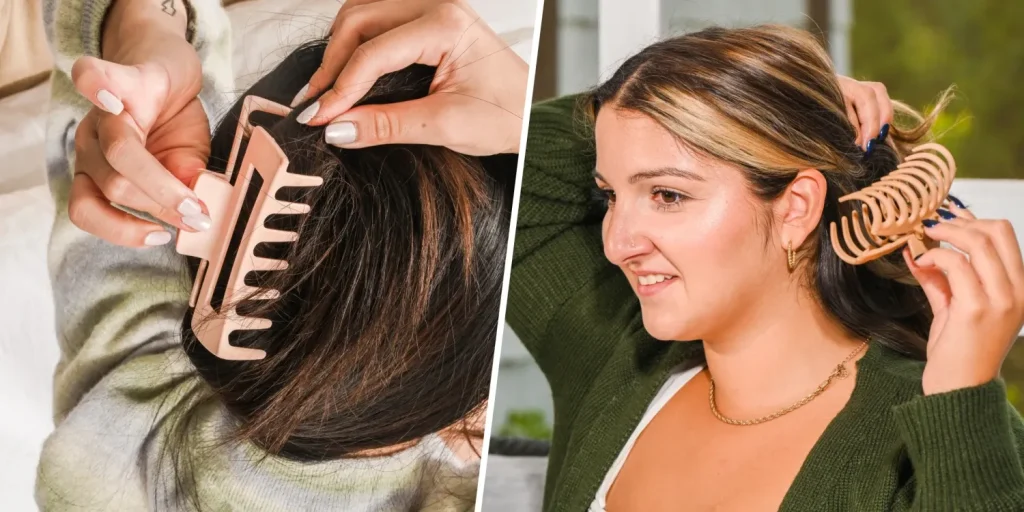
Cultural Resurgence
These clips were initially noticed in the 1990s but have had a significant resurgence in the recent years. Their revival has been massive through social media platforms such as Tik Tok where styling tutorials have garnered more than 500 million views. They are most popular among teen girls and young women, groups who have been found to have higher rates of car accidents.
The claw clips are attractive to you because of their convenience, low price, and their adaptation to casual and professional styles. They were among the best teen accessories as reported in a 2023 fashion trend report.
Why Drivers Wear Them
Most probably you put a claw clip to keep the hair out of your eyes when you are on the road. It is comfortable and nice to look at. However, the issue is that the majority of people, including teens and young women, are not aware of the security risks. It may not appear dangerous to wear one, but it might become dangerous during a crash.
Common Materials Used in Claw Clips
| Material | Properties | End Uses | Specifications | Safety Considerations |
|---|---|---|---|---|
| Plastic (ABS) | Lightweight, cost-effective, prone to cracking under high impact | Low-cost claw clips, mass-produced accessories | Tensile strength: ~40 MPa, brittle at high force | Likely to shatter, creating sharp fragments in crashes |
| Acrylic | Glossy finish, moderately durable, can be brittle | Decorative, colorful clips for aesthetic appeal | Hardness: M85, prone to cracking under stress | May break into sharp pieces, increasing laceration risk |
| Cellulose Acetate | Eco-friendly, flexible, less likely to shatter than ABS or acrylic | Premium, sustainable clips | Flexible, withstands moderate impact | Safer due to flexibility, less likely to cause cuts |
| Metal (Stainless Steel) | High durability, rigid, resistant to breaking | High-end, heavy-duty clips | High tensile strength: ~500 MPa, rigid | Risk of blunt trauma or penetration in collisions |
| Soft Plastic (TPU) | Flexible, impact-absorbing, lightweight | Soft claw clips, marketed as safer alternatives | High elasticity, low hardness | Minimizes injury risk due to flexibility |
The Dangers of Claw Clips in Car Accidents
Mechanics of Injury in a Collision
When you are involved in a crash your body is flung towards the point of impact. With a rear-end collision, your head jerks backwards into the headrest. Wear the claw clip: it can be a pressure point or even a projectile. The clip catches between your head and the seat and this is a threat to serious injury.
Claw clips reduce the proper headrest position as well. When your head cannot lie flat on the headrest, chances are high that you may experience whiplash or spine injuries.
Types of Injuries You Might Face
- Lacerations of the scalp: The sharp edges or broken clips may cut your scalp and you may need stitches or staples. These are the injuries that tend to be extremely bloody given the abundance of blood supply in the scalp and are painful to heal.
- Embedded clips:In severe cases, clips may implant into your scalp. The removal typically needs medical treatment, and may cause permanent scarring or sensitivity.
- Blunt-force trauma:Stiff clips can fail to break. Rather, they pass the force to your skull, which is more likely to swell internally or break in case of high-impact crashes.
- Spinal and neck injury:The incorrect position of the head might lead to cracks in the spine. Even a minor misalignment will cause muscle strains in your neck and restrict mobility over several weeks.
- Brain injury:Deeply ingrained clips that may lead to neurological damage are, however, rare. Depending on the severity, such trauma may either influence the memory, balance, or cognitive functionality.
Real-World Cases
Jeena Panesar (2023)
In 2023, a university student, Jeena Panesar, was in a rollover accident. She had a claw clip that lodged into her scalp upon impact causing a 30 cm long surgical removal gash. This is a frightening reminder of what might happen should you be wearing claw clips when driving.
Paisley Riley (2023)
Paisley Riley, a TikTok user, got a painful ending after an ATV accident. Her claw clip pierced her head, and five staples were needed. Such a simple accessory may seem to be causing so much harm, but it can.
Arielle Elonys (2022)
Arielle Elonys was fractured at three cervical vertebrae in 2022. The position of her head was changed by her claw clip, and the airbag hit her more harshly. She was more likely to be injured when she wore one when she was driving.
Lindsey May Noble (2023)
Paramedics retrieved pieces of broken claw clips on the scalp of Lindsey May Noble after a crash. Do not underrate what a firm clip can do in a crash.
The Role of Claw Clip Quality in Injury Risk
Low-Quality Claw Clips: Small Price, Bigger Risk
These clips are available practically everywhere: in drug stores or supermarkets, or in large quantities online. However, they are cheap at the cost of your safety.
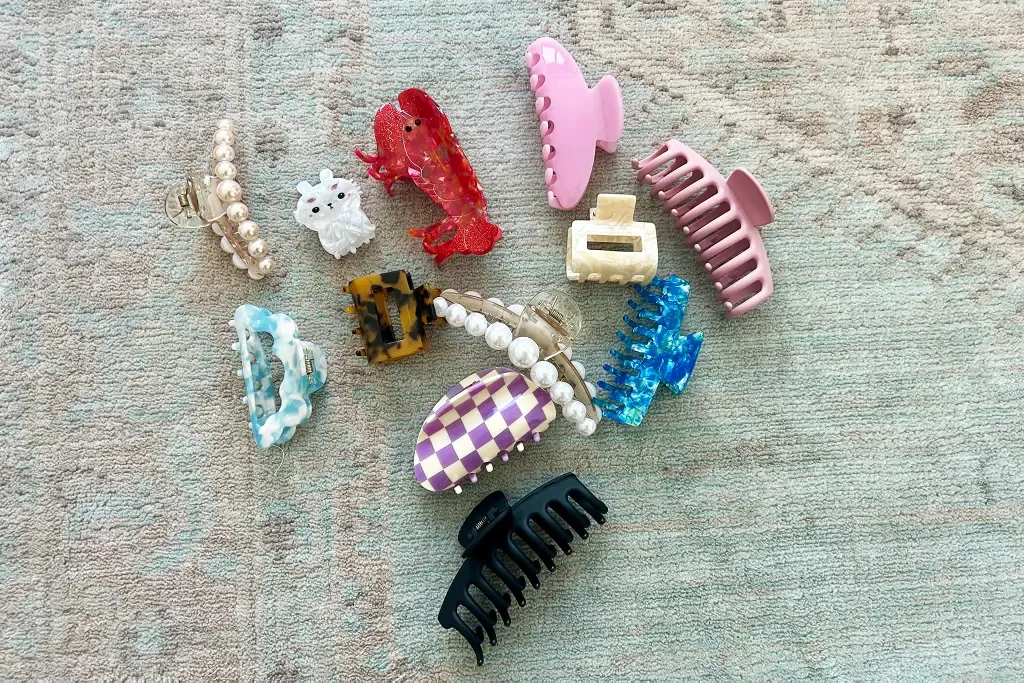
Key Characteristics:
- Constructed with low-quality and brittle plastic.
- Weak springs and sharp, thin prongs.
- Shatter when exposed to a little tension or pressure.
Real Risks:
- These clips tend to break when pressure is exerted and in a crash.
- Particles of broken clips may rip through your scalp or face forming jagged edges that serve as knives.
- These clips even without a crash can snap due to simple use- which means they will not survive in a car crash.
User Experience Example:
A Reddit user has posted about how her claw clip simply snapped due to the weight of her thick hair. Just think now of the same clip in a rear-impact collision–those bits might get stuck in your skull or into your eyes.
Takeaway:
In case you do not have a good claw clip and you are using a cheap one, then chances are that during an accident you will get cut and will be bleeding. Such injuries, although apparently not serious, can be worse than they are as the scalp is highly sensitive and well-supplied with blood.
High-Quality Claw Clips: Stronger, But Still Dangerous
At the other end, high quality clips are sold on strength and durability. Although that may be perfect, they also come with their risks within a vehicle environment.
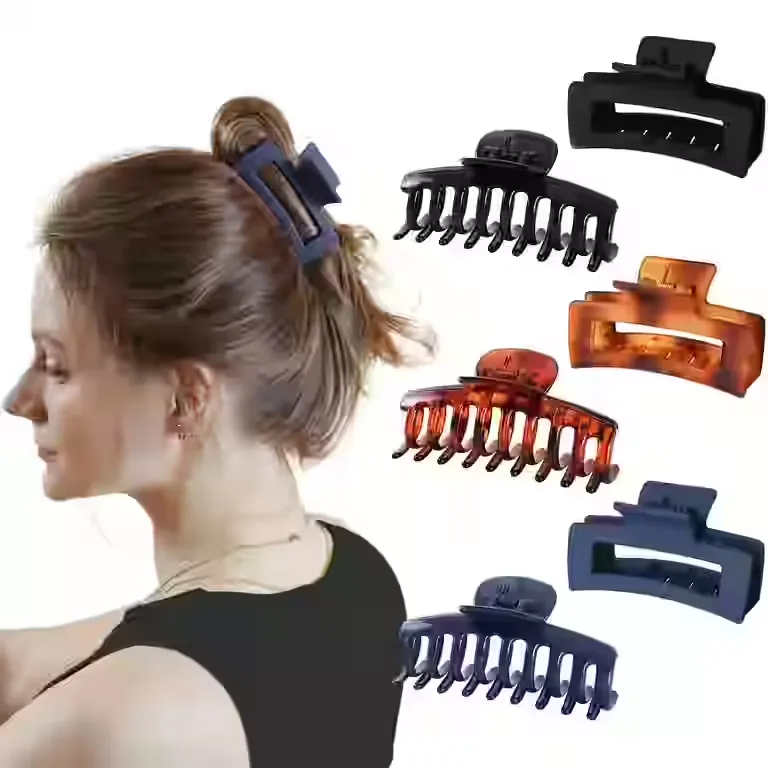
Key Characteristics:
- Constructed out of reinforced plastic or metal.
- Structured to absorb a high impact without snap.
- Marketed as unbreakable or durable.
Associated Risks:
- They are rigid, and therefore do not absorb impact, they transfer it.
- When a crash occurs, the force is forced straight into your head or skull.
- May produce blunt trauma, such as hematomas or deep tissue injury.
Case Study:
Videos on the social media feature clips such as the Teleties that survived the pressure of a car tire. Stunning in appearance-but imagine what would occur to your head when you slammed into the seat or airbag with the same strength. Such power becomes hazardous on collision.
Takeaway:
These clips will not break like cheap ones, but they are most likely to get embedded into your scalp or produce internal injuries. You may leave without any visible wounds and treat a concussion, bruises on the skull, or even vertebral misalignment.
Manufacturing Considerations: No Safety Standards in Sight
No official safety standards apply to the design of claw clips to use in cars, although the risk of injury is high. Manufacturers usually pay attention to strength, beauty and fashion. They do not warn you about what can happen during a car accident.
Durability Over Safety:
Such brands as Teleties emphasize the pressure resistance of their clips. In a crash, though, controlled failure is exactly what you want an accessory that breaks loose, not one that stands firm against your skull. Durability is a better selling point than safety so few firms care about crash behavior or even test it.
Lack of Warnings:
You cannot find warnings that tell you not to wear claw clips when you are behind the steering wheel. However, you should be aware of the way your accessory can become a weapon in the incorrect case.
Safer Alternatives to Claw Clips for Driving
Recommended Accessories
- Soft claw clipsare soft and light in weight, cushioned material. Alternatives such as soft claw clips with rounded edges made by Amazon minimize the risk of injury in case of a collision. You obtain the grip you require without the impact into your head.

- Scrunchiesare made of fabric and soft. Silk or cotton Scrunchies hold your hair in place without creating hard points. They are ideal during long trips and do not disturb the headrests.

- U-shaped hair pins are soft and flat on your head and so they are useful when you are driving. Their low design minimizes the trauma. You are able to make your hair presentable without the bulkiness of a clip.

- Headbandsmade of wide cloth keep your hair out of your face, and there are no hard components which can hurt you. They come in handy especially when you drive with windows down or when you have AC.

- Low profile small clips are less likely to dig into your head or embed in case of a crash or bump. They also provide firm handling without much contact, and hence are safer in daily use.

Safer Hairstyles for Driving
The correct hairstyle will save your life in an accident. You ought to choose styles that lie flat on your head and you should not wear bulky accessories.
- Low ponytails:Tie your hair with soft elastics. This prevents your hair falling in your face without creating pressure on your head and the seat.
- Braided crowns or Nautilus buns:These are fashionable and do not leave a large space between the scalp and the bun. Simply ensure that soft ties are used to prevent risks of injuries.
Practical Safety Tips
Make small adjustments to drive safely:
- Take off claw clips prior to driving- particularly long drive or highway.
- Keep hard accessories such as metal or plastic clips in a safe place so that they do not transform into dangerous projectiles.
- Train teen drivers, who tend to wear claw clips and are more prone to accidents.
Legal and Liability Implications
Claw Clip Injury Liability
In case of a crash, when you are wearing a claw clip, and you get injured, the driver is typically the one most liable. But your accoutrement may make things difficult. You can also have a claim of product liability against the manufacturer, in case the claw clip was badly designed or broke in a dangerous way.
Legal Actions
In order to reinforce your claim, write it all down. Make clear photos, retain all medical records and make sure that the injury is mentioned in the police reports. You need to talk to professional lawyers, ones that are experienced in the matters of claw clips causing injuries.
Preventive Advocacy
You are not the only one who desires safer solutions. Social media is now being used to warn of the dangers by many doctors and safety activists. Others even advocate laws asking safer designs in hair accessories. Sharing awareness can help prevent future injuries and ultimately alter safety benchmarks.
Conclusion
Wearing claw clips while driving may appear harmless; however, the dangers, such as cuts, embedded clips, and spinal injuries, are present. Low quality clips can break and lacerate and high-quality ones will result in blunt injuries. These dangers are minimized by safer alternatives such as soft claw clips or scrunchies. It is necessary to take out claw clips when driving and pick more secure hair accessories instead. Inform others and particularly teenagers about the unknown hazard. It is important to remember that there is no need to compromise safety in the name of style, and seemingly minor decisions may save a person from severe and permanent injuries.

